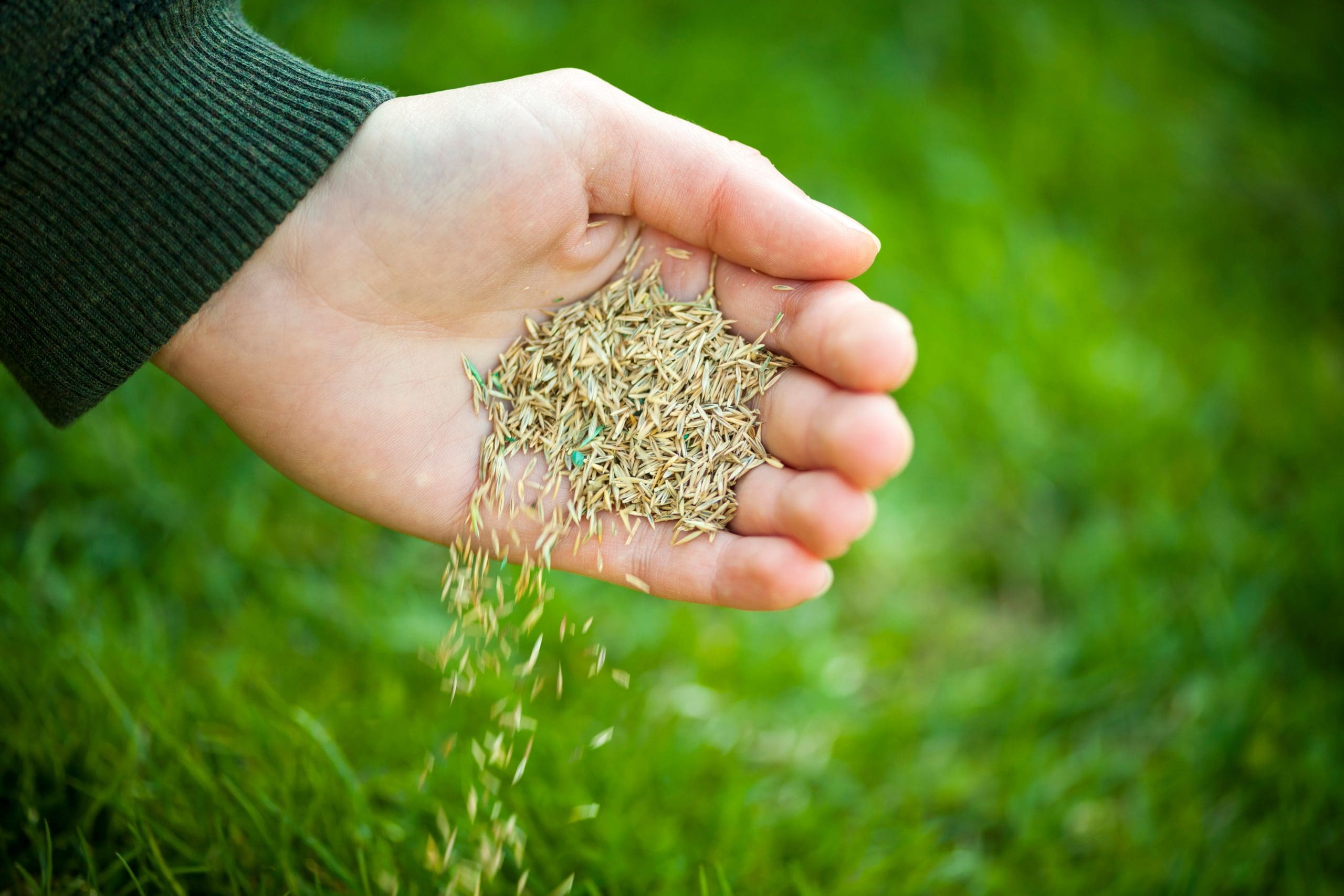
You know when people start making jokes incorporating camels and lawns that it wasn’t a banner summer for most of us. The U.S. Drought Monitor map, released each Thursday by the National Drought Mitigation Center at the University of Nebraska-Lincoln, depicted ever-increasing areas of the country that were deficient in precipitation, while evapotranspiration data from Cornell University’s Turfgrass team showed plants losing considerable water to the atmosphere. This scientific data matched up with everyone’s unscientific observations that in much of the country, lawns turned very brown.
Of course, that’s nature’s plan. When grasses encounter hot temperatures and a lack of rainfall, dormancy is the result. The plant simply stops growing, sloughs off all of the formerly emerald green tissue that we love seeing, and goes into survival mode. Preserving the plant’s growing point, the crown, is a survival tactic. Crowns can go a very long time without any rain and survive. I know that I have been pleasantly surprised at the recovery of lawns that I was certain were dead. There is a limit to how long plants can endure, obviously. This is called the permanent wilting point, a nice way of saying that your lawn is dead for good.
And yet sports turf seems to be immune to the laws of plant physiology. Naturally, that isn’t true, but the amount of money, time, and talent that goes into caring for turfgrass at that elite level is not going to be replicated on residential lawns. However, you can replicate many of the practices used there to significantly improve the performance of your customers’ lawns.
To that same end, and contrary to conventional wisdom, the professional lawn care season does not begin in the spring. It begins the previous fall as the plants recover from the blast furnace of summer. Below ground, they develop new root mass for storing carbohydrates for next spring. Above ground, the plants begin to fill in voids in the turfgrass canopy. How you manage your program in the fall has a direct impact upon how your lawns will perform in the next season. The good news here is that implementing these practices not only improves customer satisfaction, but they also improve your business’s bottom line.
When it comes to the genetic makeup of your lawns, youthful plants outcompete older ones. Researchers have made astonishing progress in developing new turfgrass cultivars that perform very well in high heat and limited available water. Incorporating these new cultivars into your customers’ lawns through overseeding is the single best thing you can do to improve turfgrass quality – and it isn’t even a close competition.
Getting new cultivars established doesn’t have to be complicated or expensive, either. All you need is seed/soil contact, meaning that the seed needs to immediately come into contact with the soil when it germinates. Some type of cultivation is necessary, be it slice seeding, core aeration or whatever implement you choose. Any is fine, just so long as the seed is in contact with the soil.
Is there a perfect day to overseed a lawn? I suppose there is, but when you have hundreds or even thousands of lawns that need to be overseeded, sowing seed on the perfect day for everyone is an obvious impossibility. In my mind, it is far more important to get all of your seeding accomplished than it is to wring one’s hands about a certain date on the calendar.
We don’t overseed all season long, so there has to be an allowance in your plans to start off slowly, allow the operators to get used to the equipment, develop a routine that allows them to be productive and, of course, allows for all of your machinery to break a few times before it’s in peak working condition. Any machine that digs into the earth will break and the more time and effort you put into preventive maintenance will be paid in return many times over.
I think your goal should be to do the very best job for the most customers that you can. If you’re early, the seed will simply wait until environmental conditions favor germination. If you’re late, recall that Mother Nature’s original battle plan for most grasses included seed surviving the winter only to germinate in the following spring.
This article was published in the Sept/Oct issue of the magazine. To read more stories from The Edge magazine, click here to subscribe to the digital edition.

